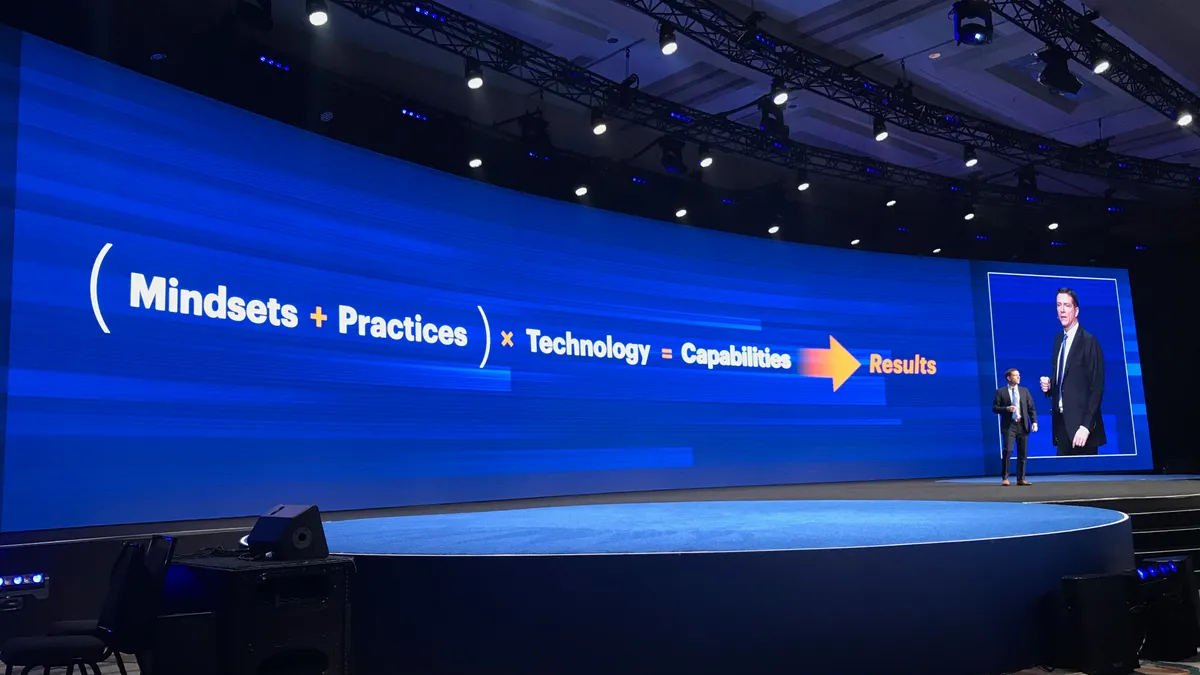CIOs and other technology business executives are tasked with making IT decisions that have a long-term impact on the business. A vast technology ecosystem amplifies indecision, especially when next-generation technologies (gasp, quantum computing) promise disruption.
Put simply, "welcome to what's next," said Mike Harris, executive vice president and global head of research at Gartner, speaking Monday at the Gartner Symposium/ITxpo in Orlando, Florida.
While intriguing, the welcome is fraught with anxiety.
Business technology relies on more than digital transformation, a phrase that is ubiquitous in industry, doing little to define what organizations are trying to accomplish. Instead, tech has to drive real change at a rapid pace.
For Gartner, this is the era of "ContinuousNEXT."
The bygone bimodal and continuous integration phases have made way for an era defined by adaptive change, according to Harris. "The transition to digital is undeniable and accelerating, disrupting both government and business models."
ContinuousNEXT is the formula to achieve success in a world that is constantly changing says Gartner EVP, Mike Harris during #GartnerSYM pic.twitter.com/5Sf0qzX1S5
— Gartner (@Gartner_inc) October 15, 2018
What's most curious about the impending digital era is technology is only a part of a successful strategy. According to Gartner, culture and privacy are balanced with augmented intelligence, digital product management and digital twins, representing the environment and the role of enterprise technology working in concert.
Ready for constant change
With a rapidly evolving technology ecosystem, the only true constant in business IT is change. But a breakneck speed of change can have ripple effects through the enterprise, even impacting consumers and other end users.
As a result, privacy becomes a focus, particularly because consumers are no longer willing to give up safety, serenity and security for convenience, according to Harris. Digital technology extends through nearly every aspect of consumers' lives and many are no longer willing to tolerate compromised data.
For some businesses, this means sacrificing innovative functionalities to protect data integrity. CIOs have a mandate to protect data, placing them at the head of privacy management programs, according to Harris. While it has become a board-level concern, barely half of organizations have adequate privacy controls in place.
Ensuring privacy and extending the enterprise data protection mandates requires buy-in across lines of business. This places pressure on cultural renovations, a key aspect of ContinuousNEXT.
Culture is comprised of the mindsets and practices that shape behavior, according to Kristin Moyer, research vice president and distinguished analyst at Gartner, speaking at the Symposium. Driven by the human resources department, digital technologies are driving cultural change across the enterprise.
As a result, CIOs will be as responsible for culture as chief human resources offices by 2021, according to Moyer.
Gartner's Kristin Moyer, explains culture hacking: simple things you can do to make a big difference at #GartnerSYM pic.twitter.com/XeGv4hHGGV
— Gartner (@Gartner_inc) October 15, 2018
To make an impact, CIOs have to "hack" enterprise culture, identifying vulnerable points to drive real change. Quick changes to culture can have a snowball effect, driving change without implementing years-long initiatives to revamp small aspects of the enterprise.
Almost half of CIOs call culture the largest barrier to realizing the benefits of a digital business, according to Gartner. Since change doesn't come all at once, CIOs can start small.
It's as simple as canceling status meetings and replacing them with short, written updates, Moyer said. This alleviates CIOs from the current environment, where they spend 70% of their time in meetings or answering email.
Small change has ripple effects and places the ownership of ideas, products and process improvements on the people who originate them.
Technology's role in the digital era
As access has become easier, the focus on individual technologies has shifted. Business executives are more concerned with the logistics of implementation, no longer as worried about choosing the right solution.
Highlighting this change is the shift toward augmented intelligence, digital product management and digital twins. Each goes beyond the existing applications, representing the role of technology in the coming digital era.
Augmented intelligence, for example, shows the positive impact of AI, a technology many are quick to fear, according to Gartner. By 2021, AI is expected to answer questions better than humans, not replacing, but augmenting.
Those who have adopted AI have had fewer job losses than expected. And where applied, it makes jobs more meaningful and rewarding, according to Gartner.
Technology may cause jobs to change, but it often transforms them, creating more streamlined ways of work.
Product management lifts #IT to a whole new level of contribution and responsibility says @MarkRaskino during #GartnerSYM pic.twitter.com/M3jec7cPGt
— Gartner (@Gartner_inc) October 15, 2018
It also sparks a more product-centric focus for technology. Rather than operate IT with a project-oriented mentality, digital technology becomes an "indivisible" part of product innovation, according to Mark Raskin, research vice president and distinguished analyst at Gartner.
Project-oriented "mindsets and practices" allow companies to roll out weekly, or even daily product updates, keeping pace with eager customers, whether internal or external to the business.
Product management lifts IT into a new level of contribution and responsibility, according to Raskin, shaping the integration of analytics and continuous intelligence that define product evolution.




















